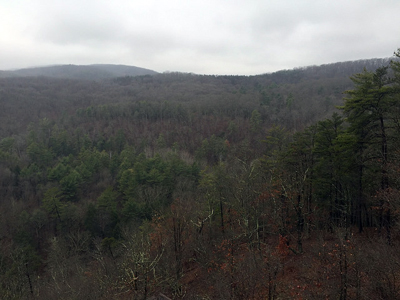Land Acquisition and Planning
Main_Content
Maryland's Green Infrastructure Assessment
 Why Large Forest Areas are Important
Why Large Forest Areas are Important
Many species require large, unbroken tracts of forest, offering deep interior forest conditions, to carry out some portion of their life cycle. Many song birds depend on Maryland’s interior forests. Some of them are neotropical migrants, whose summer habitat here and winter habitat in tropical areas is increasingly threatened. Many unique and rare plant and animal communities are also threatened by habitat fragmentation which can increase the risk of predation or the displacement of native species by invasive, exotic species.
The department selected Forest Interior Dependent Species (FIDS) to set landscape scale conservation priorities for the State. By acting upon the habitat needs of species at greatest risk from forest fragmentation, the department is also able to address the accompanying ecosystem services and other species habitat needs that are also dependent upon large blocks of intact habitat.
Size thresholds for hubs and corridors were based on the conservation needs of Maryland FIDS.
- Hubs were defined as contiguous forest blocks and wetland complexes of at least 250 acres; rare or sensitive species habitats, biologically important rivers and streams, and existing conservation lands managed for natural values.
- Corridors are at least 1100 feet wide and follow the best ecological or most natural routes between hubs to help animals, plant seeds, water and other important processes move between hubs.